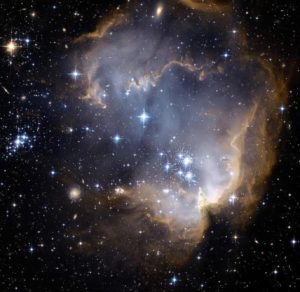
Astronomers have now started focusing on exoplanet Wolf 1061c to look for signs of life in nearby star systems.
Wolf 1061 is a red dwarf star located just 126 trillion kilometers (78.3 trillion miles), or 14 light years, from Earth. This nearby star to our Sun has three planets orbiting it. Scientists call them exoplanets because they exist outside of Earth’s solar system. Wolf 1061c, which orbits in the habitable zone of its host star, was discovered by researchers at the University of New South Wales in Australia in 2015. Astronomers revealed that three rocky worlds are orbiting Wolf 1061. Wolf 1061b orbits close to the parent star and is therefore very hot. Wolf 1061d is located far away from its host start and is therefore believed to be cold.
Stephen Kane, an astronomer from San Francisco State University, is now studying Wolf 1061c to explore the possibility of finding alien life on this exoplanet. According to Kane, the exoplanet is not only close to Earth but also lies in the habitable zone of the host star.
“The Wolf 1061 system is important because it is so close and that gives other opportunities to do follow-up studies to see if it does indeed have life.”
Kane’s team was assisted by researchers in Tennessee State University and in Geneva, Switzerland in initial measurements of Wolf 1061’s habitable zone. The findings revealed that Wolf 1061c circles orbits its host star at “goldilocks zone”, that is, the inner edge of the zone offering right conditions for organisms to survive.
Astronomers believe it is possible that Wolf 1061c would have developed an atmosphere similar to that of Venus. For a planet to sustain life on it, it must not be too far or too close to its star. If a planet is located just inside the habitable zone of the star, it would succumb to a “runaway greenhouse effect,” with all heat trapped inside atmosphere, just like Venus, which is believed to once had oceans that eventually evaporated. The resulting water vapors created a heat trap that made Venus surface even hotter, with surface temperatures around 880 degrees Fahrenheit. The opposite occurs on the other side of the habitable zone, like Mars, where water – if any – would freeze and an environment not suitable for life.
According to Kane’s team, the exoplanet’s orbit changes at a faster rate than the orbit of the Earth, suggesting that Wolf 1061c could have a chaotic climate, although there is a possibility that short time scales of the orbital changes could cool the planet.
The Messaging Extraterrestrial Intelligence (METI) is also searching for signs of extraterrestrial life on Wolf 1061c by observing it from their optical SETI observatory in Panama.
“I’m not holding my breath that we’ll ever find evidence of life on Wolf 1061c, but the fact that there’s a roughly Earth-like planet in the habitable zone of a star so close to our own solar system is a good omen as we continue our search for life on other planets,” Doug Vakoch, president METI, told Gizmodo.
“We’ll try [to observe Wolf 1061c] again later next month, when it’s visible there again, using a more advanced detector system developed by Ben Schuetz, Director of the Boquete Optical SETI Observatory,” he added.
